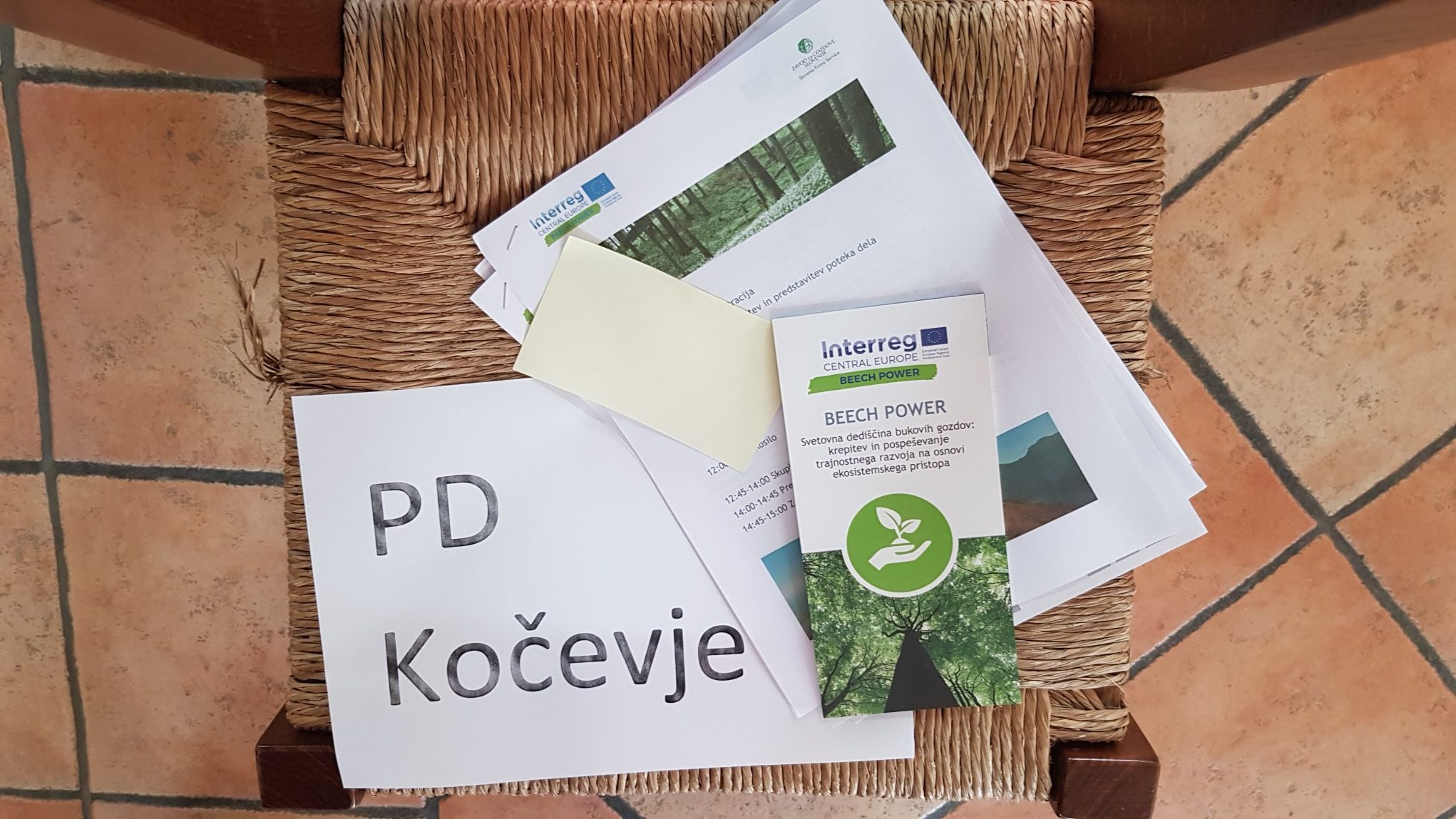Strategy workshop for the virgin forest Krokar
After the standstill that COVID-19 pandemic brought to the world in spring 2020, which also stopped a number of BEECH POWER project activities, we are now continuing with full steam and while respecting the full scope of COVID prevention measures. Following the Strategy workshops carried out in Altkünkendorf in the beginning of the month, we have organised another workshop also for one of the Slovenian component parts.
Virgin Forest Krokar is a small component part, protecting a primeval virgin forest, representing one of the main glacial refugia for beech, from where most extant European beech originates. Furthermore, the UNESCO component part is part of a very extensive forest complex covering the majority of Kočevsko region and extending to Croatia and Notranjska. Among the other forest reserves in this region, Krokar is attracting increasing visitor attention since the inscription on the World Heritage list in 2017.

Explaining the significance of the UNESCO inscribed beech forests (photo: K. Konečnik)
Last year, in November, a workshop in Kočevje to identify the situation analysis was held, where main threats to the component part were identified. Given that the component part is quite remote (the closest town is 25 km away, the closest village 8 km) and entirely state owned, the identified threats mainly revolved around visitors and much larger themes, such as climate change, transboundary pollution, and migrant crisis. The latter two are out of scope to be addressed with the local stakehodlers, therefore we now focussed only on visitor management.
 Group at work identifying activities and strategies for visitor management challenges (photo: U. Prosen)
Group at work identifying activities and strategies for visitor management challenges (photo: U. Prosen)
On 19th September, the Slovenia Forest Service project team organised a workshop in the village of Osilnica, which lies under the cliffs above which the virgin forest Krokar hides. Perhaps due to the quite remote location of the workshop, and very nice weather, the workshop was attended only by 15 participants. Nevertheless, they represented a diverse mix of foresters, hunters, conservation NGOs, photographers, local tourist agencies, providers and societies.
Two smaller groups elaborated concrete proposals for activities and strategies to address the challenge of visitors. One group focussed more on providing visitor experience and infrastructure outside of the component part and increasing the surveillance of the area. The other proposed closing the entire area for individual visitors and allowing only guided tours to enter it, however the guided tours could also enter the virgin forest, which is currently not allowed. Both groups produced details and concrete actions which will be considered by the decision makers.
Following the workshop, the representative of the City Administration of Angermünde – the lead project partner for this thematic work package – was also taken on a short, impromptu field trip to present the component part and the discussed topics directly in the area. This kind of field trips is considered critical for information and knowledge exchange between the component parts of this UNESCO designation. We visited some of the viewpoints in the surroundings of the component part, with only touching the edges of the buffer zone, while staying outside of it. Even so, it was possible to present the Outstanding Universal Value of the area and ensure outstanding visitor experience, demonstrating the efficacy of some of the proposed solutions during the workshop.
In the end of September, a similar workshop was prepared also for the other Slovenian component part, forest reserve Snežnik and then based on the results of both workshops, a regional strategy and working programme for enhanced cooperation between the component part managers and local communities will be elaborated.
 Pre-defined seating charts are just one of the COVID-19 prevention measures taken to ensure safety of the participants (photo: K. Konečnik)
Pre-defined seating charts are just one of the COVID-19 prevention measures taken to ensure safety of the participants (photo: K. Konečnik)